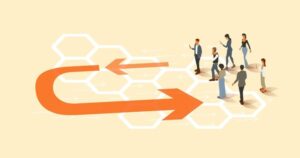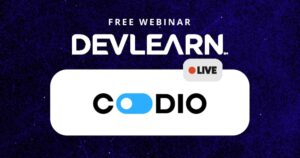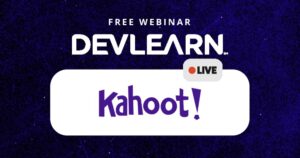Your cart is currently empty!

Basic Data Skills Enhance eLearning, Improve Impact

As eLearning relies more heavily on data and adopts AI-basedtechnologies, understanding how to process, analyze, and apply data isessential. Several of the skills that data scientists use every day wouldnicely round out an eLearning developer’s toolbox. L&D teams should includeat least one member with basic data skills to enhance eLearning development andimpact.
Defining the problem
Many eLearning design and development projects begin with(or should begin with) defining the problem. Rather than assuming that“a training” is needed, a data scientist would ask questions and get to theproblem that the manager requesting eLearning is hoping to solve. Are learnersfailing to complete assigned or mandatory training? Are they completing thetraining but failing to transfer the knowledge covered to their jobs? Are theypassing assessments but still making the same errors in performance? Or do theyneed to quickly master a new skill, understand changes to regulations, or gainfluency in discussing new or updated products?
An eLearning designer needs the answers to these questionsto determine whether to create training or performance support tools—or whetheran entirely different response is needed—and to figure out where the problemsare with existing training and tools. A data scientist would convert theresponses to those questions into data questions.
The data scientist might then look at some existing data:How many learners complete the training? At what point do learners drop out?Which areas of training are not transferring successfully to on-the-jobperformance? What are the most common errors employees are making, even aftercompleting training? This process of analyzing the existing data can provideuseful insights that improve the design of the new or existing eLearning tools.For instance, the data might reveal patterns that indicate that employees fromspecific geographic locations or in cohorts that started work at a certain timeor that received different initial training are performing better (or worse). Itcould reveal patterns in the ages or job descriptions of employees who don’tcomplete their training. These are clues that designers and developers can useto build eLearning that targets and engages underperforming employees.
The data scientist could draw some conclusions and presentthem—along with suggestions for tweaking the design—to other members of theteam. She could also dig deeper and examine the data more closely or gathersome additional information. She might interview learners about how and why theeLearning is failing to meet their needs, for example. Whatever path isselected, gathering and analyzing data has added important information thatmight have otherwise been overlooked in the initial eLearning design.
Measuring eLearning success
L&D professionals increasingly must justify companies’ investmentin training and performance support tools. One way to measure eLearning impactis by using data. But as it becomes easier to collect data, especially in xAPI-basedeLearning tools, developers might find themselves with a sea of datathat they’re not sure what to do with.
With some data science knowledge, though, those developerscould identify metrics that would measure, for example:
- Training impact on performance
- Training impact on business results
- Value—ROI—of training
Gathering and analyzing data on key performance metrics enablesdevelopers to fine-tune their eLearning products, increasing the value ofL&D within the company—as well as the value and productivity of employeelearners.
Collecting data is not sufficient. The developer or dataanalyst must be able to visualize and explain to managers, executives, L&Dcolleagues, and to learners themselves what the data show. Data visualizationskills are the key here. The data scientist identifies patterns and explainsthem, providing context and helping those who lack fluency in statistics tounderstand what the data reveal. She can create charts and graphs that presentthe data visually in an easy-to-understand format.
Specific data skills L&D pros need
Data scientists might delve deeper into programming,statistics, software engineering, or machine learning, but an eLearningdeveloper who’s eager to add data skills could start with:
- Statistics:Data scientists should understand distributions, design and evaluation ofexperiments, and probability.
- Programmingand data tools: Knowledge of SQL and statistical programming languages is abasic skill for data scientists.
- Algorithms:Learning how algorithms work and how to use them to predict performance isimportant; while software can do much of this, a basic understanding of theunderlying mathematical concepts can help the data scientist avoidmisinterpreting data.
- Cleaningdata: Raw data can be messy. Identifying imperfections and “cleaning” data,for example, standardizing string formatting or identifying missing values, canimprove the accuracy of the data—and therefore any information gleaned from it.
- Datavisualization: Presenting data in a clear, comprehensible manner tocolleagues, whether managers or fellow L&D professionals, makes the datauseful and enables the data scientist to extract the maximum meaning and valuefrom data.
In addition, developers should have strong problem-solvingand logic skills and be able to figure out which data matters—and which isirrelevant—to a particular goal or problem.
L&D pros can learn these and other basic data skills inany of dozens of eLearning courses or through certificate and degree programsat their local universities and community colleges. In addition, The eLearningGuild published Putting Data to Work, a researchreport, in June and will host an online Dataand Analytics Summit August 22 & 23, 2018, to explore the connectionsbetween data, analytics, and eLearning content.







